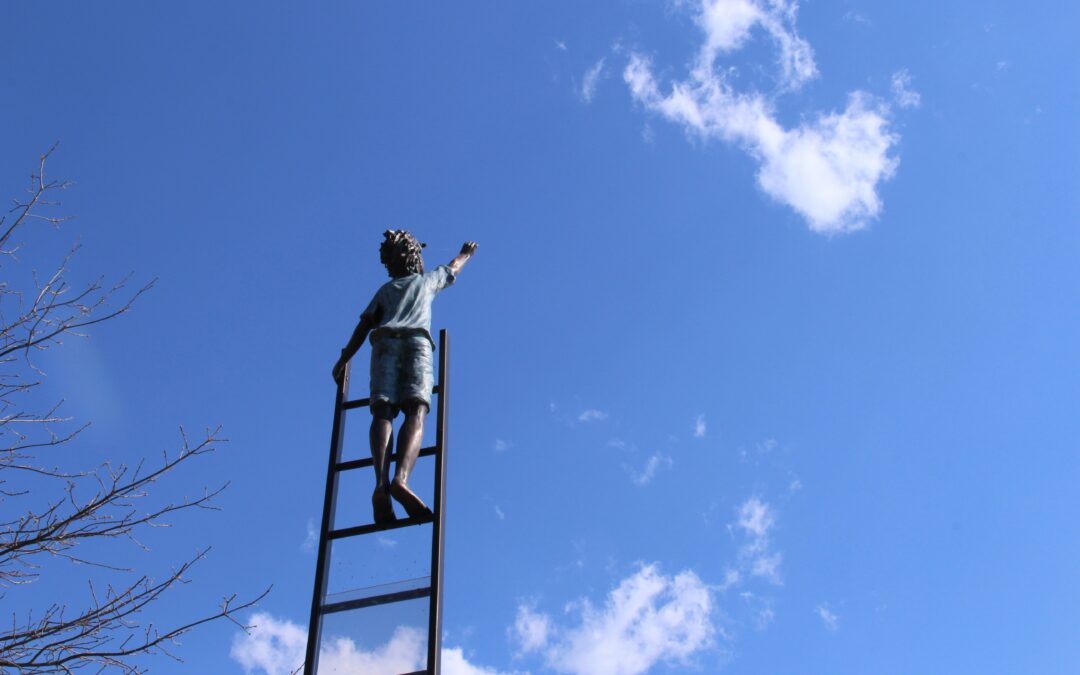Hearing the words “bottom up” when we look at how people are viewed, judged or measured can be a trigger for me and others. In my lived experience, I’ve witnessed negative connotations or biased opinions when it comes to the reality or perception of what the “bottom” references.
The Study that Put Charlotte at the Bottom
When the 2014 “Land of Opportunity” Study placed Charlotte 50th (out of 50) for economic mobility in major cities, stating that children born into poverty likely remained in poverty, there were shock waves. The findings were a catalyst for rallying cries from corporate, community and civic leaders to do something to change this outcome for Charlotte. Leaders joined forces and organized the Charlotte-Mecklenburg Opportunity Task Force, ultimately developing 91 recommendations to improve and advance economic mobility, especially for the most vulnerable populations.
That study was published a decade ago. Since that time, Leading on Opportunity, an organization supporting Charlotte’s generations-long journey, was formed to convene sectors, implement the recommendations, and improve economic mobility for all using three cornerstones: strategy, data, and policy.
Reactions to this study sent a clear message – Charlotte didn’t like being placed at the bottom but it ended up there from its inability to improve the quality of life for many of its citizens.
How it Feels
Most parents want their children to thrive in their educational pursuits – from preschool to advanced degrees. This belief is strong and crosses variables of race, religion, gender, zip codes and economic status.
When my younger son was in third grade, he struggled with reading and spelling. He would try really hard, but for him, success was not instant. My son was not a traditional learner but instead an experiential learner. This means he learned best through a hands-on or interactive approach strengthened by experiences. Yet, his teacher at the time was not enthusiastic about experiential learning or the context of how he learned. Therefore, my son was placed in the lowest reading and spelling groups. One day, he came home and asked, “Am I smart?” Even in third grade, my son, who learned differently, knew that he was at the bottom. And more importantly, he didn’t like how that made him feel.
In response to his question, I shared that sometimes it takes longer to process, navigate and understand information. I told him that we would find the right tools and resources to course correct to get him on track. It was a journey of advocating for experiential learning not only for the teacher, but for the school administration as well. I did not shy away from this journey because I knew the talents and gifts that my son possessed. I just needed his learning environment to adequately adjust to how he learned and processed information.
After months of sharing case studies and articles on experiential learning, I gained buy-in from the principal who directed the teacher to try this approach. Once she did, my son gained traction of clarity and understanding that was notable in elevating him to higher reading and spelling groups. This was a pivotal moment that changed his trajectory and mine.
Who Decides?
What occurred with my son are common occurrences for many. Someone is deciding who is deemed to be “at the bottom” – not only in education, but in a variety of sectors and situations.
When we work on projects at Next Stage, we regularly hear the phrase, ‘from the bottom up.’ Usually this is said with good intentions and acknowledgment from people in positions of power or influence, especially for problem-solving.
But let’s be clear – no one likes to be at the bottom or feel less than. This is evident in Charlotte’s response to the study and my son’s response to his teacher. There are structures and systems put in place that don’t optimize inclusivity or equity for everyone. And while “starting from the bottom up” implies that everyone will be able to provide feedback, it also implies that the final decision will still be made by those at the top. This begs the question:
Who determined the bottom? And who is benefitting from that structure?
Unpacking the Inside-Out Framework
It’s why Next Stage has changed its language over the last year. We champion an “inside-out” approach instead of a “bottom up” framework. “Inside-out” focuses on proximity to a problem or concern, seeking resolution together. It shakes up the process and suggests that every stakeholder’s voice has value, regardless of where they reside in the community or organizational chain of command.
We want to continue this conversation and continue leading the charge on reframing this mindset. On April 17, Next Stage is launching a series of free webinars unpacking the concept of “Inside Out”. We’ll share how Community Voice creates a foundation for nonprofit leadership, communications and program staff to authentically engage with stakeholders, improve program quality and create messaging that resonates.
The first session will be on Wednesday, April 17, at 11 am. Sign up here to join us!
